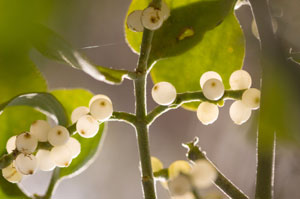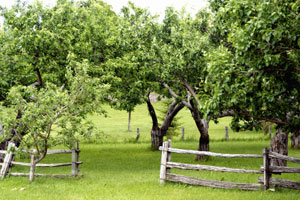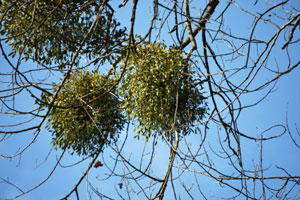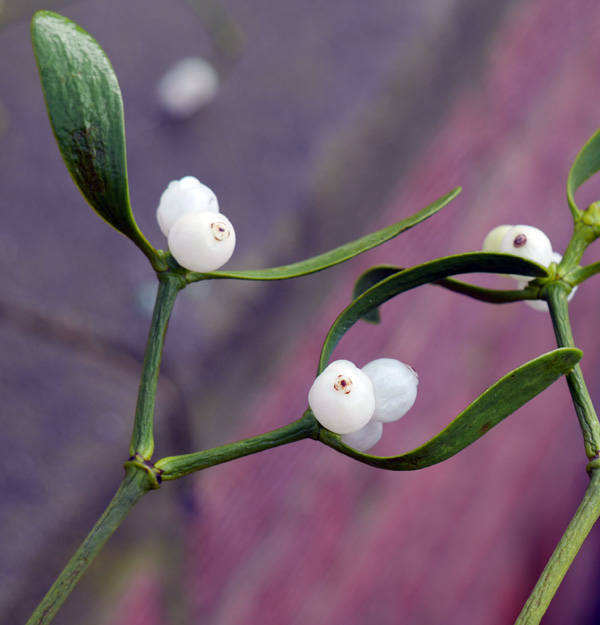Save the Mistletoe !

Mistletoe, one of the time-honoured symbols of Christmas is under threat! For many years, the ‘heartlands’ for mistletoe collection have been the cider counties – such as Somerset, Gloucestershire, Herefordshire and Worcestershire. However, many of the orchards in these areas have declined or have been lost over the last 50 / 60 years. It is possible that Mistletoe could become a rarity in our countryside.
The National Trust has launched a campaign ‘to help secure the future of Mistletoe through buying sustainably sourced home grown mistletoe in the run up to Christmas and seasonal parties’. This campaign encourages us to ask where the mistletoe (that we are buying) has come from. It is thought that a significant amount of mistletoe now comes in from Europe – particularly Northern France.
Visit The English Mistletoe Shop at http://www.buy.mistletoe.org.uk/ or if you have an apple, poplar or lime tree in your garden, then maybe consider growing your own mistletoe (in the long term!) – see http://www.buy.mistletoe.org.uk/growkits.htm . Growkits are also available and are dispatched in February; the plants grow best from berries ‘planted’ at this time. Mistletoe growkit vouchers are available as Christmas presents !
 Mistletoe.org.uk is collecting information this month about where people buy their mistletoe and how they use it. So if you have a few minutes to spare then you could help them build up a picture of mistletoe sales and use ; this information will help inform the conservation, management and harvesting of mistletoe. The National Trust and Natural England are working together to restore traditional orchards and promote community run orchards, and associated cottage industries producing cider and apple juice.
Mistletoe.org.uk is collecting information this month about where people buy their mistletoe and how they use it. So if you have a few minutes to spare then you could help them build up a picture of mistletoe sales and use ; this information will help inform the conservation, management and harvesting of mistletoe. The National Trust and Natural England are working together to restore traditional orchards and promote community run orchards, and associated cottage industries producing cider and apple juice.
Mistletoe is sometimes described as a partial parasite or hemiparasite. Its berries or fruits are taken by birds but the sticky or viscid tissue around the actual seeds 'prevents' the seed from being swallowed. So a bird (for example, a blackcap or mistle thrush) will scrape off the seed from the beak onto the bark of a tree (such as apple, lime, poplar, hawthorn or occasionally oak) where it may germinate.
The mistletoe takes minerals and water from the conducting tissue (xylem) of its host plant, having established clamp-like connections (haustoria) with the host stem. The leaves of the mistletoe are green so it is able to photosynthesise and make its own sugars. With management, the host trees are not damaged by the association with the mistletoe.
For further information see :
http://www.bbc.co.uk/news/uk-11933118
http://www.mistletoe.org.uk/home/index2.htm
Comments are closed for this post.
Discussion
Great article! Very interesting and useful!


Hi there,
If you are looking to obtain some nice Mistletoe and Holly to decorate your home this Christmas, then take a look at this lovely site http://www.mistletoe-holly.co.uk for sustainably sourced English mistletoe and Holly and you will also be supporting the important Tenbury Wells auction too!!!
Fred and Hayley
1 December, 2011